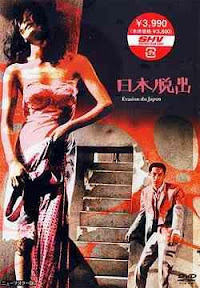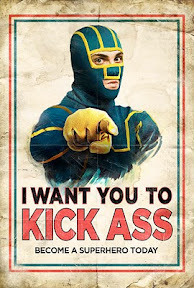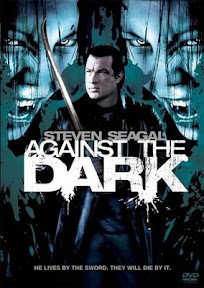Dracula is a vampire -- a nosferatu, as some peasants and academics say. What of it? What is a vampire, exactly? Most American moviegoers, given the rarity of Murnau's Nosferatu, had never seen a "real" vampire. What, then, do they learn from Browning and Bela Lugosi?

Which of these three doesn't belong?
Bela Lugosi played this character, a repulsive monster, on Broadway and became a sex symbol. How did that happen? Part of it had to do with his famous accent, which made him a counterpart of the "Latin Lovers" who were popular during the Twenties -- though in silent movies you couldn't hear the accents. There was a bit of the "demon lover" in the Latin Lover, something savage and dominant -- think of Valentino as The Sheik. Think of Valentino as Dracula, for that matter, had he lived. Plausible? If so, that may clarify the connection between the vampire and the Latin Lover. For female audiences, both offered a rape fantasy of sorts that was made safe by being fictional, even if the vampire's rape threatened a fate literally worse than death.
Sex appeal makes Lugosi's Dracula something very different from the ugly horrors of Nosferatu and London After Midnight, but Wendigo reminds me that in folklore the word nosferatu means an incubus who sexually ravishes women until they die of exhaustion or become pregnant by the creature. So sex has always been there, Wendigo suggests, but women weren't going to imagine welcoming Max Schreck into their beds. Lugosi adds sex appeal to the sex. He dresses well and displays a Romantic if Gothic sensibility ("To be truly dead...that would be glorious"). At the same time, Wendigo emphasizes the way that Lugosi conveys with his slowness, his labored English ("to-morrow...eve...nink.") and his glacial, deliberate movements, that he is a dead thing. We've seen other Lugosi films from 1931 where he moves more energetically and speaks English much more easily than in Dracula, so we can conclude that his manner of speaking the lines he's known for years is a deliberate choice. Slowness also symbolizes sleep, hypnosis and somnambulism, and his victims (most notably his brides) become as slow as Dracula. Under his influence, Mina thirsts for Jonathan Harker's blood, but doesn't pounce with fangs bared as in a modern vampire film. Instead, she closes in oh so slowly as the camera closes in in another instance of Browning's (and Karl Freund's) underrated facility with the camera. The slowness identifies her and Dracula as not of this world.
Helen Chandler as Mina, with a lean and hungry look. David Manners
may as well have his back to us throughout the picture.
Lugosi's undead sexiness is, most significantly, a synthesis of the folkloric vampire and the pop-culture vampire, two very different things that had been competing for attention for decades before the Hamilton Deane-John R. Balderston play and the Universal adaptation began to merge them. In the very year when Bram Stoker published the novel Dracula, Rudyard Kipling published "The Vampire," which was inspired by Philip Burne-Jones's painting of the same name. Poem and painting described a man drained of life force by a predatory female who was not a bloodsucker but a kind of moral succubus.
The poem's opening words, "A fool there was," became the title of Porter Emerson Browne's play and nove that, as a 1914 movie, made Theda Bara one of Hollywood's first true stars. Bara's star persona was the "vampire." The subsequent diminutive, "vamp," which survives today, doesn't convey the malignancy imagined by Kipling and subsequent writers.
If someone used the word "vampire" in the media from 1897 until 1931, they were less likely to have meant someone like Dracula than someone like Theda Bara. Bram Stoker's legacy was lapped by Kipling's almost as soon as both were out of the starting gate. Wendigo observes, however, that the pop-culture vampire archetype I've described reminds him a lot of Sheridan LeFanu's Carmilla, while Bara's habit of striking batlike poses at least evoked a supernatural lineage for her mundane menaces. What Balderston, Deane, Browning and Lugosi did with Dracula was integrate the seductive aspect of the pop vamp with the traditional supernatural monster -- with a lingering pop fascination with mesmerism (Svengali reached the screen the same year as Dracula) thrown in. After the movie, when people spoke of vampires they were once more more likely to mean the undead than gold-digging maneaters. That's a little cultural revolution right there.
The bat effects in Dracula aren't really bad for a first try.
It all sounds good on paper, but it was up to Browning, the recognized master of cinematic grotesques, to sell it. His direction of Dracula has a bad reputation, mainly because he mostly stuck with the play's centralization of action at the Seward house. Critics give him credit for an atmospheric first half hour, while Renfield travels to Castle Dracula, but act as if the camera simply froze once the vampire reached London. Browning has suffered even more since George Melford's Spanish-language version returned to mass circulation, but Wendigo and I agree that the English-language version gets a bad rap. Looking at the main action with reviewers' eyes, we noticed how frequently Browning moves the camera in the dreaded drawing room, how often he dollies in and out for emphasis, and how often he stages the action to let actors walk toward the camera or retreat from the camera for maximum dramatic effect. Also, Browning doesn't need as many fancy directoral tricks to hold your attention as Melford does, because Browning has Lugosi. Any sensible director of Dracula would film Lugosi the way Fred Astaire preferred to be filmed, because Bela acts with his whole body and needs to be seen occupying the same space as his fellow actors in order for his timing to work. Browning doesn't need to impose an auteurial signature here; the story itself is enough to mark this as a typical Browning film for his fans.
Art direction by Charles D. Hall
Browning enjoys a definitive cast of supporting players.
Dwight Frye is Renfield. He's a more important character than in the novel, based on the writers' need to tie the madman more closely to the main plot. He takes Harker's place on the trip to Transylvania (which reduces David Manners's Harker to a near nonentity) and is stuck in a situation where the audience knows more than he does. He holds our sympathy with his determined politeness, but once under Dracula's sway he blossoms into one of movies' great madmen, as well as a faithful-enough embodiment of Stoker's "sane man fighting for his soul." Nearly everyone admires Frye's mad scenes and his incredible laugh, but Wendigo feels that he deserves more credit for a more fully nuanced performance that encompasses compassion and moral terror as well as insane arrogance and craven servility. Frye's Renfield may persist as an archetype for actors even longer than Lugosi's Dracula.
Sorry, Hammer fans, but Edward Van Sloan is Van Helsing. Peter Cushing does a great version of the character, but Van Sloan embodies pure willpower in a manner Cushing never matched. Here a character's slowness (compared with Cushing's dynamic performances) expresses indomitable authority. The scene where Van Helsing stares down Dracula despite the vampire's full exertion of his dominance is an awesome moment. Van Sloan portrays a man who takes no shit from anyone, dead or alive. Dracula has heard of this guy, Bela tells us, but still underestimates him. Van Helsing's virtues are willpower and knowledge, a point sometimes missed by Cushing and entirely lost by (ugh!) Hugh Jackman in a recent travesty of the mythos.
Dwight Frye sets the tone for generations of viewers dissatisfied with Charles Gerrard as Martin.
Van Helsing tells us that he will turn the superstitions of the past into the scientific truths of today by revealing a vampire's existence. This assertion helps us understand why some other characters in the movie annoy people so much. Probably the most hated person in the picture is Martin, the sanitarium keeper and "loony" catcher. Martin's only response to any outburst from Renfield, no matter how revealing it might be, is to reiterate that he's a loony. He grows convinced by the end of the film that everyone but himself is loony. In simplest terms Martin is comedy relief on the Shakespearean model of an ignorant smart-aleck, but for Dracula's purposes he represents the far extreme of unwillingness to believe the increasingly obvious. Wendigo adds that comedy-relief characters and scenes serve a necessary release-valve function, breaking up the tension of the plot so that the next shock will be a fresh jolt. Next most obtuse is poor Jonathan Harker, who scoffs and sneers at Van Helsing's notions until Mina's teeth are practically in his throat. David Manners' very name may have destined him to play bland heroes, but he can't be blamed for a thankless role that reduces the hero of the novel to a clueless observer of events. We want him to figure it out, but we might just take him for a stubborn skeptic if we didn't have Martin around to show us that Harker's viewpoint is just plain stupid.
Wendigo suggests, however, that Harker's ignorance may be a necessary component of his innocence. He notes that, even after Harker realizes the truth, he never becomes such a vampire hunter that he has blood on his hands. Wendigo's impressed by the final symbolism of Harker escorting Mina up the great staircase out of the Carfax crypt, as if he were guiding her out of the underworld into which the fallen angel (Dracula) had driven her. Harker has to retain a sort of innocence in order to fulfill this function, but viewers might be excused for finding him a little too innocent to be respectable.
The Browning Dracula remains one of Wendigo's top ten vampire films. It holds up well after eighty years, and Wendigo sees fresh details and nuances every time he watches it. Because it's a consciously trailblazing film, it retains a certain transgressive quality no matter how tame the action may seem compared to so many later vampire films. Wendigo has never read the play, so he can't be certain how much Browning really contributed, but the director was probably the right man for the moment. When I asked him what Dracula has that so many later films lack, he told me that it might be the simplistic answer, but "Bela Lugosi" is the correct one. He has "it," as might have been said of a contemporary "vamp," and it sticks with us today. No matter how many have followed him in the role, Dracula still speaks to the collective consciousness in Lugosi's voice. Wendigo will not say that this is the best vampire film ever, but it'll always be in the running. For my part, when asked by Wendigo, I won't claim it's the best either, but I will say it still sets a standard for the genre. The others are all variations on Dracula's theme.
Here's the familiar Realart re-release trailer, uploaded to YouTube by RoboJapan.













